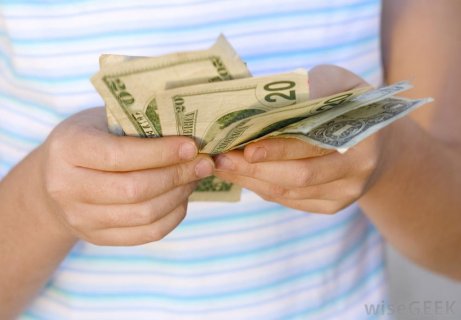
Editor's note: See the 2015 survey, " 2015 Cash Advance Survey: Convenient cash will cost you plenty"
Using your credit card to draw cash at an ATM or writing one of those handy checks that comes in your monthly card statement can cost you plenty: typically around 24 percent annual interest, which is 6 percentage points more than the average interest rate cardholders pay on purchases.
Oh, and don't forget the typical 5 percent fee that card companies charge for a cash advance.
Those figures are drawn from a new CreditCards.com survey of cash-advance rates and fees on 100 top cards, the first look of its kind at this widely available but costly credit card loan product. Its findings help support the advice of credit counselors, who say that cash advances should be used only when consumers exhaust other, less costly options. Unlike using cards for purchases - which offer an interest-free grace period if you pay off your statement in full and on time - interest on cash advances starts immediately, so costs can balloon if the debt is not repaid quickly.
The CreditCards.com survey also found:
- Cash-advance interest rates ranged from 9.99 percent (on three cards from federal credit unions) to 36 percent (First Premier Bank Gold MasterCard). The median interest rate on cash advances was 24.24 percent.
- The median difference between interest rates on purchases versus cash advances was 6 percentage points. Seven cards generously offered the same rates on purchases as cash advances. On the other end, two cards charged interest rates a full 11 points higher for cash advances than for purchases.
- On fees, most cards charge 3 percent to 5 percent for a cash advance, with a $10 minimum charge.
Rarely used, but fees rising
Overall, cash advances are a seldom-used feature of credit cards. According to an October 2013 report by the Consumer Financial Protection Bureau, just 3.1 percent of active credit card accounts took cash advances in a three-month period at the end of 2012, down from 4 percent four years earlier.
The report also found that cardholders are taking cash advances less often and in smaller amounts than they used to. However, cash advance fees rose to an average of 4.9 percent.
Credit counselors generally frown on taking cash advances to pay ordinary expenses, and consumers tend to use them when they have few other options. Financially, it is almost always better to pay a merchant with a credit card or to use existing funds from a checking account before drawing on a cash advance and incurring the associated fees and high interest charges. But there are some circumstances in which using a cash advance could be understandable, especially in emergencies.
Rich Van Rooyen, a 42-year-old software developer in Stratford, Ontario, says he took out a cash advance only once in his life. He and his wife Jana were driving in a remote section of Canada nearly 20 years ago when his Ford Escort hit a crevice in the road, blew out the two passenger-side tires and damaged the rims.
Fresh out of college, he had little money and no credit cards to pay the $1, 200 repair costs. Jana only had a Discover card, which was not widely accepted in Canada. The couple found a nearby Sears store and was able to take a cash advance to cover the costs. Van Rooyen says he repaid it quickly.
"This was a last resort, " he says. "There was no other money. There was no other way. It was an act of desperation."
Getting poll results. Please wait...
Why the high rates?
Banks say they charge higher rates for cash advances than for purchases because cash advances reflect a higher risk of not being repaid. In addition, banks routinely set a lower limit for cash advance withdrawals than the overall credit limit on their cards.
Darrin Graham, vice president of marketing with Premier Bankcard, which offers a MasterCard with 36 percent interest, says rates are higher than other cards because most of the people with the card are trying to rebuild their credit after past problems. In a news release two years ago, the bank said it issued about 70 percent of the nation's credit cards offered to people with credit scores of 600 or lower.
"It's about managing the risk with these people, " he said. "It's like car insurance. If you've had an accident in the past, you will pay higher rates for awhile."
He says Premier Bankcard does "absolutely no marketing" of cash advances, but that the service is available to those who might need it.
Interesting facts
Additional information




|
Amazon.com Rewards Visa Card Financial Product
|

|
Work Time Clock Mobile Application (Double Down Software LLC)
|








